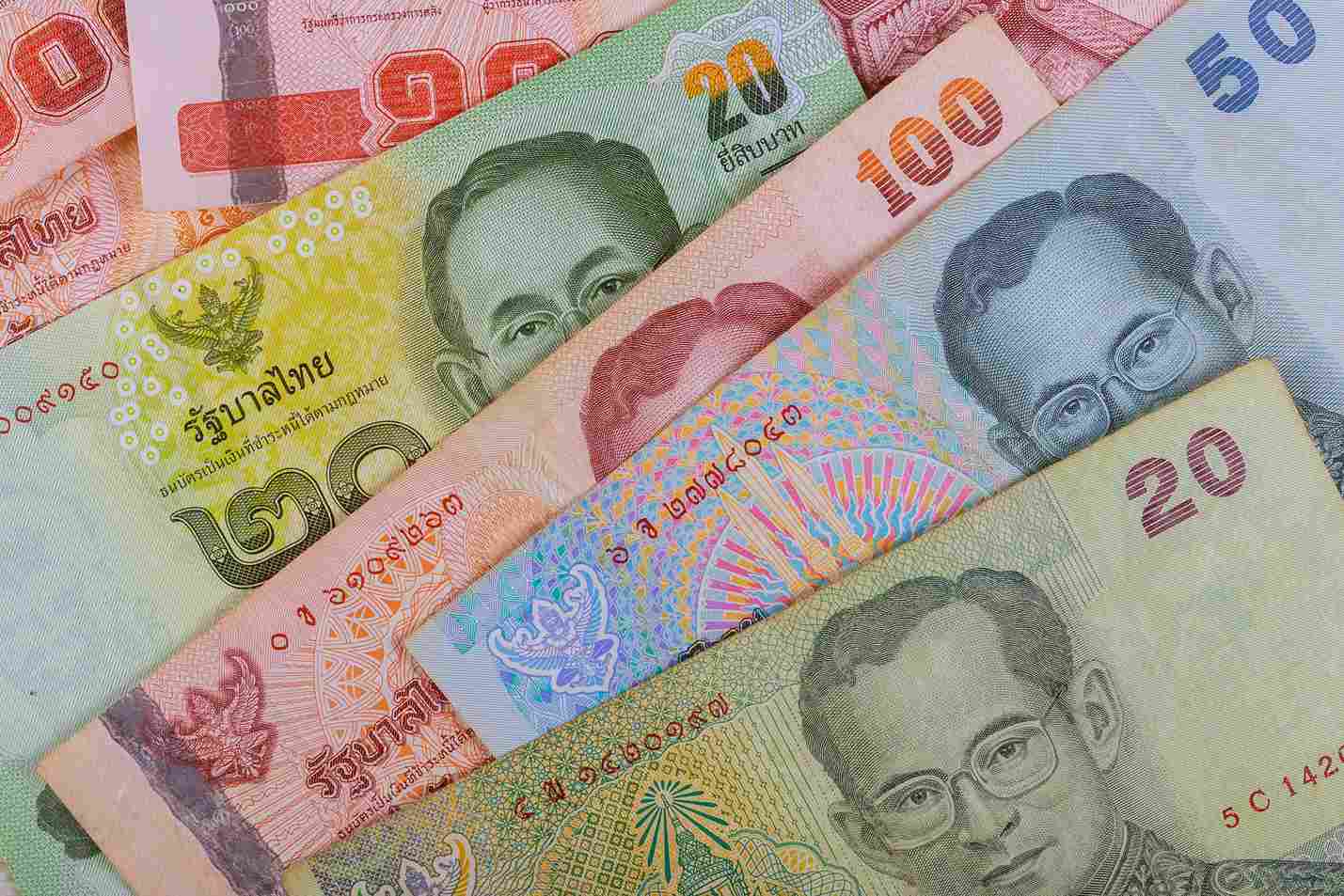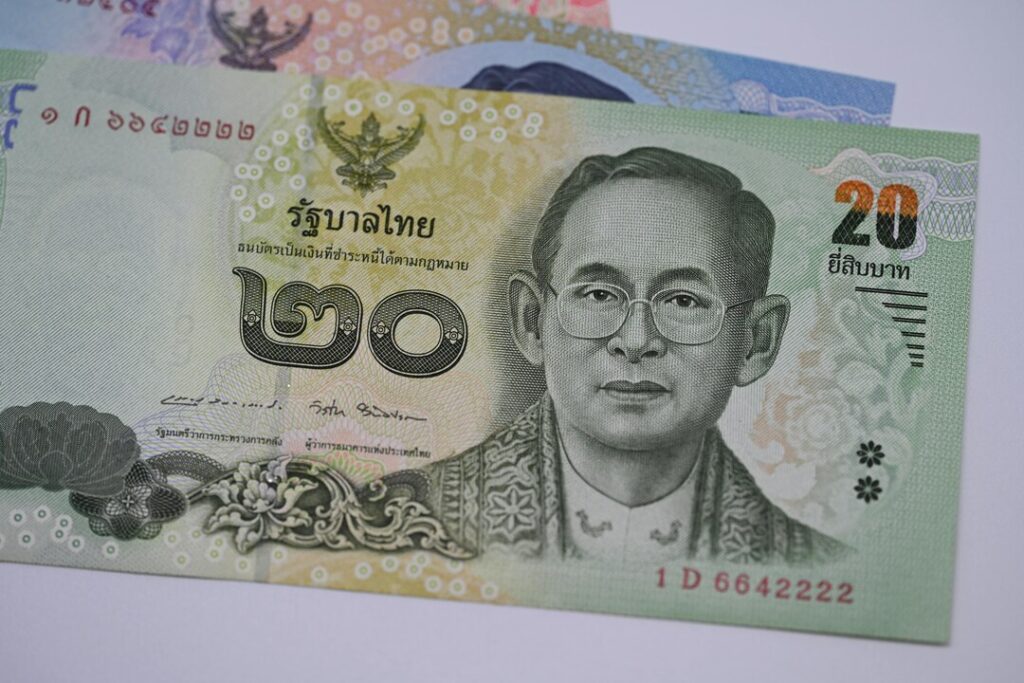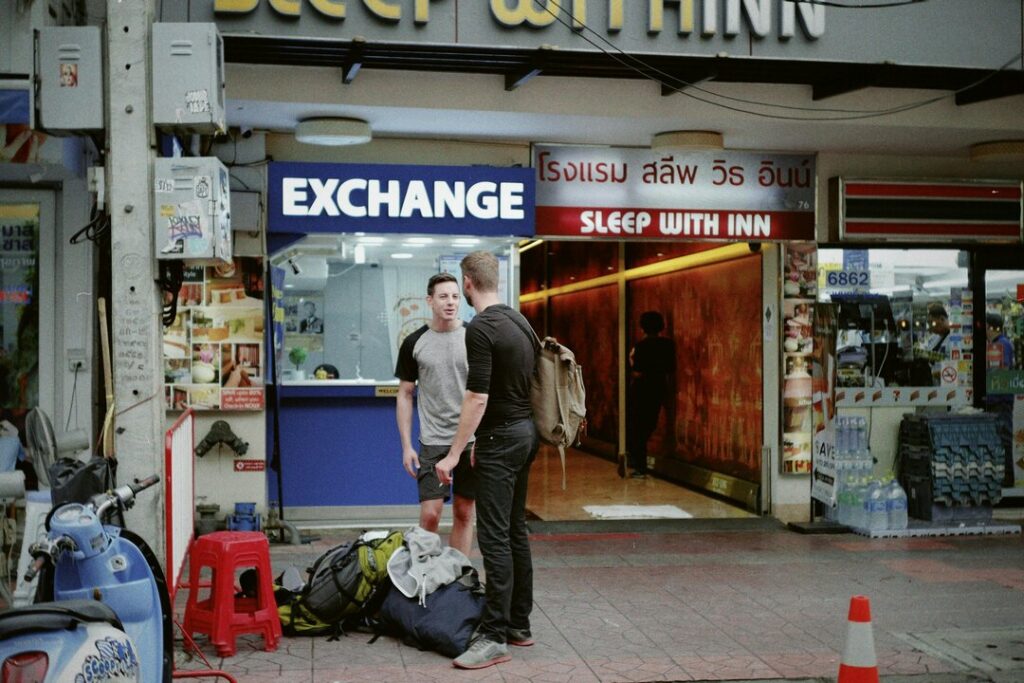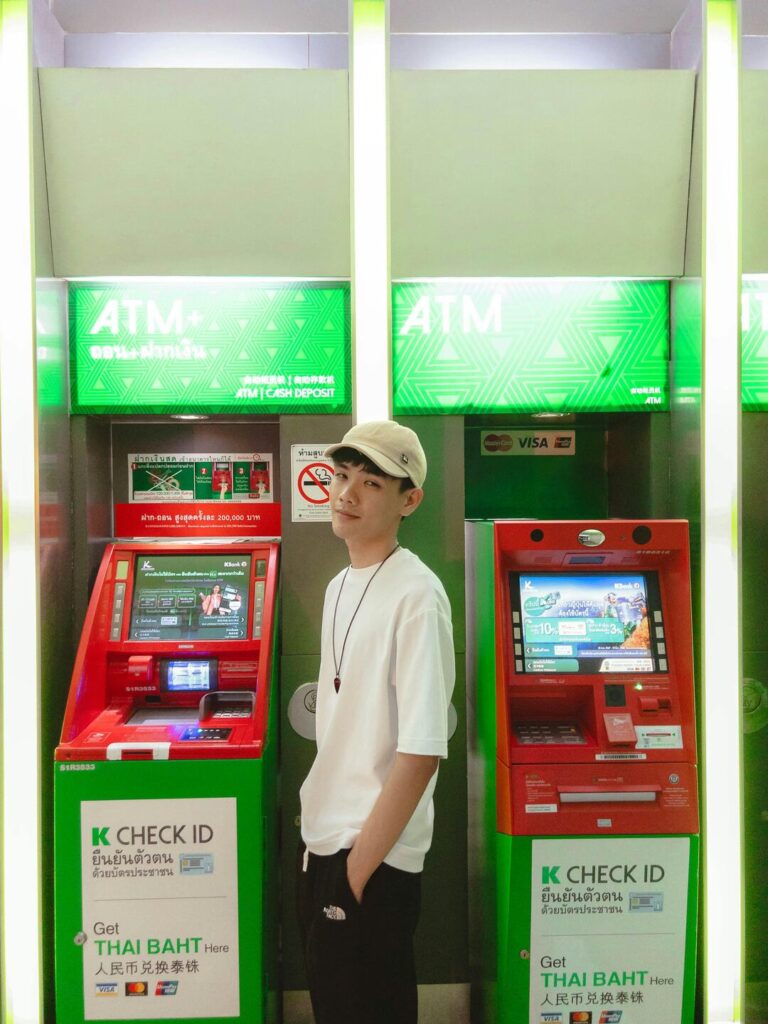
Currency in Thailand: A Simple Guide for Tourists
Whether you're exploring temples in Chiang Mai or relaxing on the beaches of Phuket, understanding the currency in Thailand is essential for a hassle-free trip. The official currency is the Thai Baht (THB), symbolized as ฿, and it is used everywhere from street markets to shopping malls.
Got your currency sorted? Also explore Gomayu’s Thailand tour packages to plan your trip with ease and confidence!
While credit cards and digital wallets are increasingly accepted in cities, cash is still king in rural areas and local vendors. This guide covers everything tourists need to know from where to exchange currency, how digital and card payments work, to tipping and safety tips.
- 1 Thai Baht = 100 satang
- Notes: ฿20, ฿50, ฿100, ฿500, ฿1,000
- Coins: ฿1, ฿2, ฿5, ฿10, 25 and 50 satang

Currency Exchange in Thailand
Currency exchange is easy in Thailand and available at banks, airport kiosks, and money exchange booths. Exchange rates at airports are convenient but slightly lower than in city centers. For better rates, visit SuperRich or other trusted exchange booths in places like Bangkok or Chiang Mai. Always carry your passport for currency exchange transactions.
Where to exchange safely:
- SuperRich Thailand (orange or green)
- Banks like Bangkok Bank, SCB, Krungthai
- Authorized exchange counters in tourist areas
Highlights:
- Avoid exchanging large amounts at the airport.
- Always compare exchange rates before making a transaction.
- Don’t exchange with unlicensed street vendors.

Digital Payment Options in Thailand
Thailand is quickly becoming a digital-friendly country, especially in urban areas. Apps like PromptPay, TrueMoney Wallet, and LINE Pay are popular among locals. However, these apps often require Thai bank accounts, making them less accessible to tourists. International travelers can rely on QR payments or mobile wallets like Apple Pay and Google Pay where accepted.
For tourists:
- Use QR Visa/Mastercard codes in major stores.
- Apple Pay and Samsung Pay work at modern terminals.
Highlights:
- Digital payments are widely accepted in malls, hotels, and restaurants.
- Use cash for tuk-tuks, street food, and local shops.
- Mobile apps for locals may not support foreign cards.
Credit Card and Debit Card Payment (Payment options in Thailand)
Visa and Mastercard are widely accepted in Thailand. Hotels, malls, restaurants, and spas usually take cards, but smaller businesses often prefer cash. American Express and Discover may not work in many places.
Accepted cards:
- Visa and Mastercard (high acceptance)
- Amex and UnionPay at select locations
Highlights:
- Many stores have a minimum spend for card usage (e.g., ฿300).
- Expect 1–3% fees for foreign transactions.
- ATMs are widely available and reliable.

Tipping Culture in Thailand
Tipping is not compulsory but is appreciated in Thailand, especially for good service. Upscale restaurants and hotels often include a 10% service charge, but additional tips are still welcomed. Tipping small amounts in cash shows appreciation and is common among tourists.
When to tip:
- Hotel staff, massage therapists, and tour guides
- Restaurant servers if no service charge is added
Highlights:
- ฿20–฿100 is a normal tip range depending on service.
- Always tip in cash.
- Tipping is more expected in tourist-heavy areas.
Useful Tips for Tourists
- Always carry small change for taxis, markets, and street food.
- Use ATMs attached to bank branches to avoid skimming.
- Use XE or Google to check real-time exchange rates.
- Let your bank know before traveling to avoid card blocks.
- Avoid accepting damaged or torn baht notes, they may be refused.
FAQs About Currency in Thailand
1. What payment method is used in Thailand?
Cash, credit/debit cards, QR code payments, and mobile wallets like PromptPay are commonly used in Thailand.
2. What is the best payment options in Thailand?
Use cash for local markets and street food. Use cards or contactless payment at hotels, malls, and tourist spots.
3. What is the payment scheme in Thailand?
Thailand uses a national QR payment system called PromptPay for fast, bank-linked transfers and payments.
4. What payment app is used in Thailand?
Thai people commonly use PromptPay, TrueMoney Wallet, and LINE Pay. Tourists may use Apple Pay or Google Pay at supported terminals.
5. How to pay in Thailand online?
Use international cards for hotel or tour bookings online. Local apps like TrueMoney or ShopeePay work for domestic users.
6. Can I use Gpay in Thailand?
Google Pay works for some online purchases. It's not widely accepted in physical stores.
7. How to pay in Thailand without cash?
Use Visa/Mastercard contactless cards or mobile wallets like Apple Pay or Samsung Pay at modern terminals.
8. Is it better to use cash or card in Thailand?
Use cash for small purchases and street vendors. Use cards at hotels, shopping malls, and upscale restaurants.
9. Can I use my ATM card in Thailand?
Yes, foreign ATM cards (Visa/Mastercard) work in most ATMs. Enable international usage before traveling.
10. Which card works in Thailand?
Visa and Mastercard are widely accepted. American Express works only at select places.
11. What is pink card in Thailand?
The “Pink Card” is an ID for foreign residents, not a payment card.
12. How do I pay money into Thailand?
Use international services like Wise, Western Union, or bank transfers to send money to Thailand.
13. What is dowry for Thai?
The Thai dowry, called “Sin Sod,” is a traditional payment given to the bride’s family. It varies by family and status.
14. What is the best payment options in Thailand?
Cash is most reliable. For large or secure transactions, use credit/debit cards.
15. Which wallet is best in Thailand?
TrueMoney Wallet is popular among locals. Tourists may rely on Apple Pay or card-linked QR code payments.
16. Can I pay with my phone in Thailand?
Yes, if your phone supports Apple Pay, Google Pay, or Samsung Pay. Make sure the store terminal supports contactless.
17. Which ATM is best in Thailand?
CitiBank, Bangkok Bank, and AEON ATMs charge lower fees or allow higher limits. Use machines inside malls or branches.
18. Is UPI accepted in Thailand?
No, UPI is India-specific and not accepted in Thailand.
19. What is the best card to use in Thailand?
Visa and Mastercard with no foreign transaction fees are ideal. Prepaid travel cards also work well.
20. Does Gpay work in Nepal?
Google Pay is not fully supported in Nepal. You can’t receive money, only limited send features.
21. What is the full form of UPI?
UPI stands for Unified Payments Interface, a payment method used in India.
22. What is the payment options in Phuket?
Cash is most common in Phuket. Many hotels and restaurants also accept cards and digital QR payments.
23. How much cash do I need for 2 weeks in Thailand?
Budget travelers may need $300–$500, while luxury travelers may need $1000+ for two weeks.
24. How to avoid Thai ATM fees?
Use ATMs like AEON or CitiBank with lower fees. Withdraw larger amounts less frequently to reduce charges.
25. What is Thailand’s digital wallet?
TrueMoney Wallet and PromptPay are Thailand’s main digital payment systems.
26. How to pay in Thailand as a foreigner?
Use cash for everyday items and Visa/Mastercard for hotels and tours. QR code payments are also growing.
27. How many Thai Baht to 100?
100 USD ≈ 3,600–3,700 THB. Always check live rates before exchanging.
28. How much is an ATM fee in Thailand?
Most ATMs charge ฿220–฿250 per foreign card withdrawal.
29. How much cash should I carry to Thailand?
Carry around ฿1,000–฿2,000 for daily spending. Use cards or ATMs for larger needs.
30. What is the cheapest way to use an ATM in Thailand?
Withdraw from AEON or CitiBank ATMs, which may offer lower or no fees. Avoid multiple small withdrawals.
31. What is the international ATM fee?
Thailand ATMs charge around ฿220–฿250. Your home bank may also charge additional fees.
32. What is the best way to pay someone in Thailand?
Use cash or a local bank transfer (PromptPay). Tourists can pay by card or use Wise for sending funds.
33. Is Thailand mainly cash or card?
Thailand is still mainly cash-based. Cities accept cards, but markets and taxis usually require cash.
34. What is Thailand’s national payment system?
PromptPay is the official national real-time payment network, used for QR payments and P2P transfers.
35. What is the best way to take money in Thailand?
Use a travel-friendly debit card with no ATM fees. Withdraw cash as needed and carry small change.
36. Is there PayPal in Thailand?
Yes, PayPal is available and used for online payments. It's not widely used in stores.
37. Which ATM is best for foreigners in Thailand?
CitiBank, AEON, and Bangkok Bank offer the best options for foreigners. Look for machines that support your card type.
38. How to avoid ATM fees in Thailand?
Use banks with lower fees, withdraw larger sums, or use a global bank card with free withdrawals.
39. How should I pay in Thailand?
Cash is king, but card is useful for big purchases. Always keep both.
40. How to pay cashless in Thailand?
Use contactless cards, Apple Pay, or QR-based payments at modern terminals and stores.
41. How to use TNG in Thailand?
TNG (Touch ‘n Go) from Malaysia does not work in Thailand. Use local wallets or international cards.
42. Is 1000 Baht a lot?
฿1000 (~$27) is enough for a full day of food, transport, and light shopping for one person.








